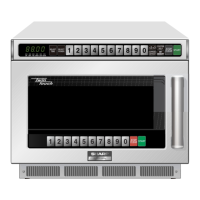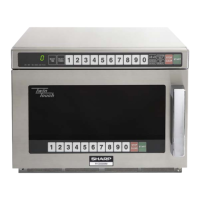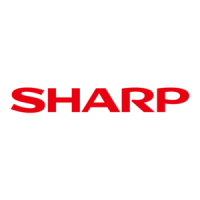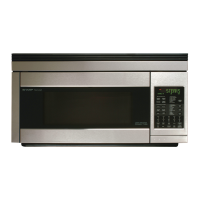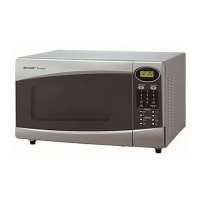21
Tab
Knob
Tab
Oven Ceiling Cover
Splash
cover
Tab
Tab
Hole
Oven Ceiling Cover
Splash
cover
Projection
Hole
Hole
Screw
Air intake filter
Pin
Hole
Knob
3) Wipe any grease, spills or spatters on the door
seal
surfaces with a soft damp cloth or sponge
so that they do not build up. The door seals
must
always be free of grease and spatters so
that the door closes properl
y. Such build-up
could result in leakage of microwave energy
from the oven
Door
Wipe
the door and window on both sides fre-
quently
with a soft damp cloth or sponge to
remove
any spills or spatters. Always keep the
door
seals and seal surfaces clean so that any
grease,
spills or spatters are not allowed to build
up.
Build-up could result in leakage of
microwave energy from the oven.
Air Intake Filter
Keep
the air intake fi lter clean. Clean at least every
two
weeks which are equivalent to 100 houes (see
8.
Air Intake fi lter Counter on page xx) or more
often
for heavy use. Loosen the screw holding
the
air intake filter to the oven and move the air
intake filter to the left a little bit to remove the air
intake filter from the pin.
Wash the air intake filter in mild soapy water,
rinse
and dry with a soft cloth. After cleaning
re-install the air intake filter.
COOKING GUIDE
Utensils
METAL
1) Frozen Precooked Foods in Foil Containers
When cooking foods in foil containers, the container should be no more than 1/2” deep. The best
method to use is, after removing the foil cover, return the metal container to the paper box or pack-
age it came in and place this entire unit in the microwave oven. There must be more food than
metal, and the metal container must not touch the oven walls.
2) Metal Skewers
Small metal skewers may be used if there is a large proportion of food to the amount of metal. If
arcing does begin, stop the oven, remove the food and change to a wooden skewe
r.
Whenever using metal foil, foil containers or metal skewers, be sure that the metal does not touch
the sides of the oven.
GLASS, GLASS-CERAMIC, CERAMIC AND CHINA UTENSILS
Most glass, glass ceramic, ceramic and china utensils are excellent for use in microwave ovens. Heatre-
sistant glassware, unless it has metallic trim or metal portions, can almost always be used in the
microwave oven, no matter whether it is clear or opaque. However, you must be careful not to use
delicate glassware since it might crack from the heat of the food but not from the microwaves.
Most dinner plates, unless they have metallic trim, are acceptable for heating foods.
Utensils with metallic trim or metal parts, such as screws, bands, handles, etc. must be avoided. Cracked
or crazed glazes or chips are also indications that a dish should not be used. Ceramic mugs or cups
with glued on handles are also not recommended for use in a microwave oven.
PAPER GOODS
For low heat cooking, such as reheating or very short cooking times and for foods with low fat, sugar or
water content, paper is a good utensil for microwave oven use. Napkins, towels, plates, cups, cartons,
paper freezer wrap and the paper pulp board that some meats come packed in are also convenient
utensils for use in the microwave oven. Cardboard can also be used. Paper is used in the microwave
Projections
Fig.-1
Fig.-2
Note
1. The tiny Knob is very important to fasten in
splach cover, therefore don’t lose it.
2. The Screw and the Knob cn be loosened and
fastened with your hands or a coin.
